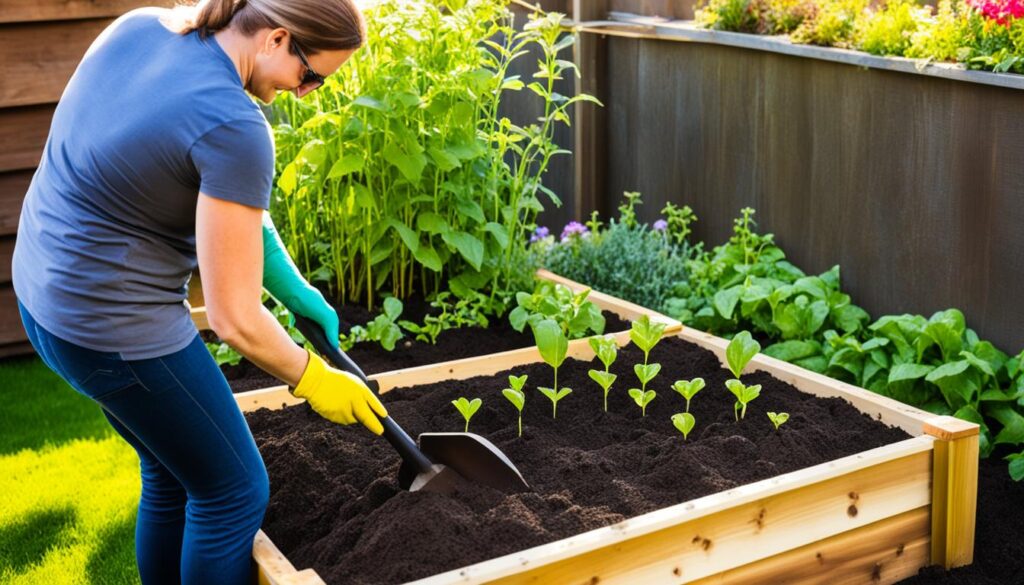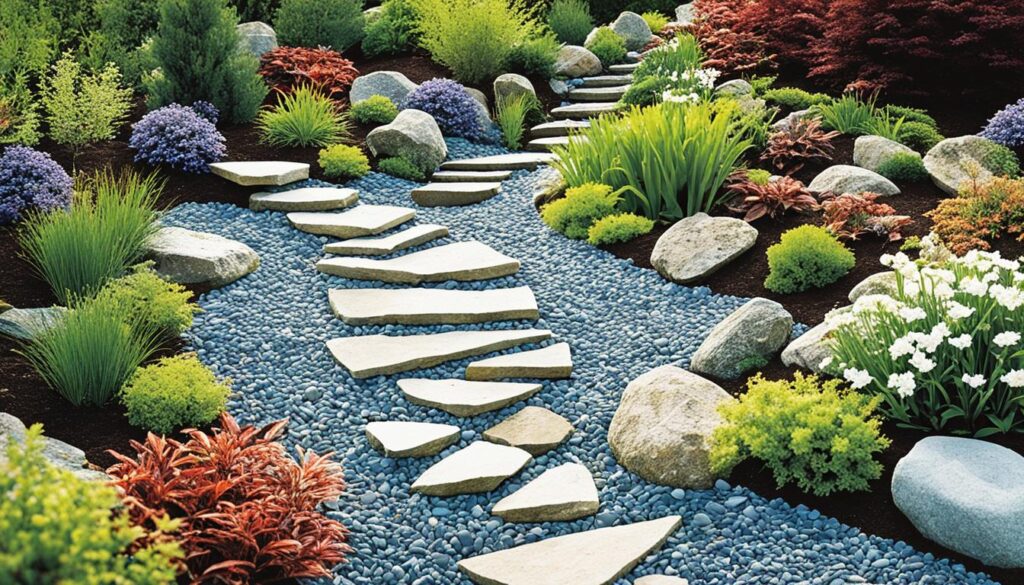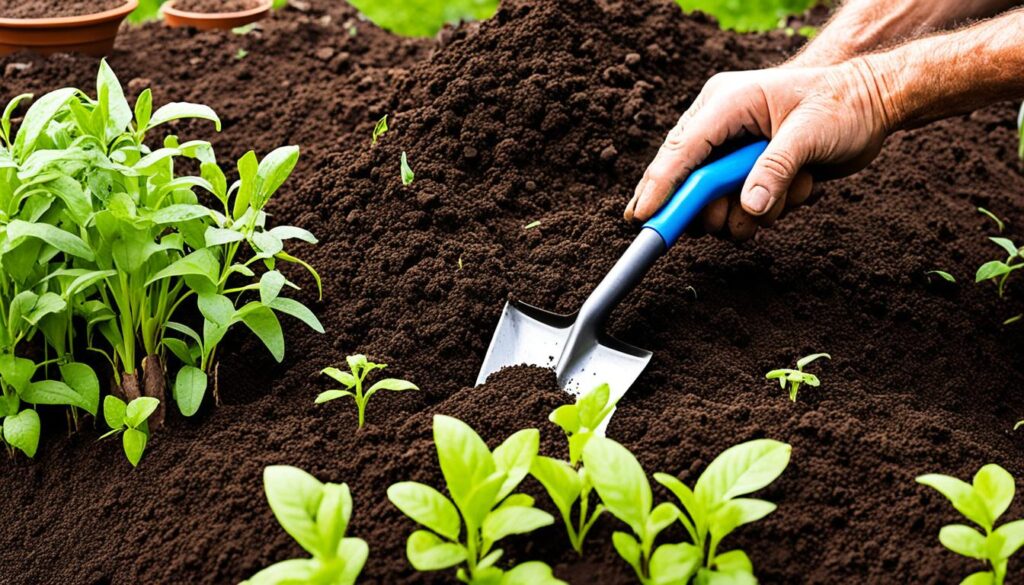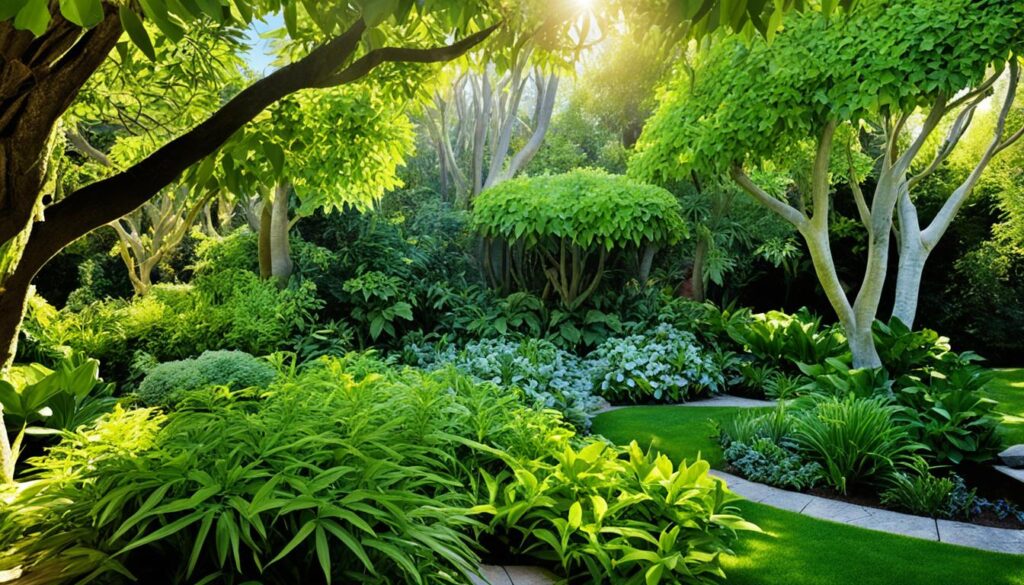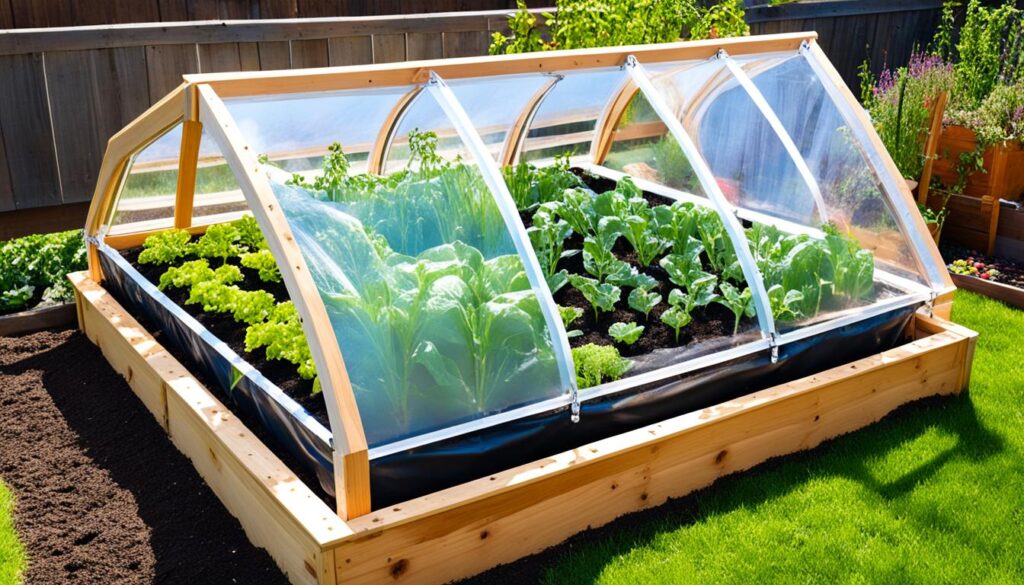Welcome to the ultimate guide on creating a stunning indoor living wall. If you’re a plant lover like me, you’ll be thrilled to learn how to bring greenery into your home and create a mesmerizing vertical garden. In this tutorial, I will share step-by-step instructions and valuable tips for designing, constructing, and maintaining your very own indoor plant wall.
Key Takeaways:
- DIY vertical garden tips
- Living wall design ideas
- Indoor green wall installation
- Best plants for indoor living wall
- Living wall maintenance guide
Selecting the Perfect Spot for Your Living Wall
Before starting your indoor living wall project, it’s important to choose the right spot for it. Assess your space and ensure there is plenty of natural light or consider using grow lights. Bright, indirect light is ideal for plant walls, so select a location near a window or skylight if you’re not planning to use grow lights. Proper lighting is crucial for the health and growth of your plants.
To determine the perfect indoor plant wall location, evaluate the natural lighting conditions in your space. Choose an area that receives bright, filtered light throughout the day. Avoid placing your living wall in direct sunlight, as this can cause damage to the plants and lead to excessive heat. If natural light is limited, you can supplement it with grow lights.
Grow lights are an excellent solution for indoor plant walls in spaces with low light intensity or limited access to natural light. These artificial lights simulate sunlight and provide the necessary light spectrum for plant growth. When selecting grow lights, consider the specific needs of your plants, as different varieties require varying light intensity and color temperatures.
“Choosing the right location and lighting for your living wall is essential for the success and health of your plants.” – Expert Gardener
Choosing the Right Materials for Your Plant Wall
When building your indoor living wall, it’s essential to select the appropriate materials. The choice of materials will determine the durability, functionality, and overall success of your plant wall. Here are some key considerations to keep in mind:
Plant Wall Systems
One option for constructing a plant wall is to use prefabricated plant wall systems. These systems are specifically designed for vertical gardening and offer many advantages. They are typically made of plastic, which makes them water-resistant and durable. Plastic plant wall systems can withstand humidity and the occasional splashes that may come with watering your plants. These systems also come with built-in pockets or slots for planting, allowing for easy installation and maintenance.
Breathable vs. Plastic Systems
While plastic plant wall systems are highly functional, there is another type of material to consider: breathable fabric. Breathable materials like felt or fabric allow for improved air circulation around the plant roots, promoting healthy growth. These materials are often more budget-friendly compared to plastic systems. However, it’s important to note that breathable materials may require more maintenance. If not adequately maintained, they can lead to wall damage and even mold growth. Consider the level of maintenance you’re willing to commit to before choosing a breathable fabric system for your plant wall.
DIY Wall Structure Methods
For those who enjoy hands-on projects, DIY wall structure methods can be a rewarding option. Wood pallets, chicken wire, and landscape fabric are common materials used in DIY plant walls. While these methods are excellent for outdoor plant walls, they may not be suitable for indoor use. Indoor plant walls require proper insulation and protection against water damage, which DIY methods may not provide. If you’re considering a DIY approach, ensure that your design incorporates suitable materials for indoor use.
“The choice of materials for your plant wall is crucial for its longevity and functionality. I found that plastic plant wall systems are a reliable option, as they offer durability and water resistance. However, it’s essential to assess your needs and consider the maintenance requirements before making a decision.”
By carefully choosing the right materials for your indoor living wall, you’re setting a solid foundation for a thriving and visually stunning green space in your home.
| Material | Advantages | Disadvantages |
|---|---|---|
| Plastic Plant Wall Systems | – Water-resistant and durable – Easy installation and maintenance – Designed specifically for vertical gardening |
– May not provide as much airflow – Higher cost compared to DIY methods |
| Breathable Fabric Systems | – Improved air circulation for plant roots – Budget-friendly option |
– Requires regular maintenance – Can cause wall damage if not maintained properly |
| DIY Methods | – Customizable design options – Hands-on project satisfaction |
– Not suitable for indoor use – May lack proper insulation and water resistance |
Choosing the right materials for your indoor living wall is a crucial step towards creating a green space that thrives. Whether you opt for plastic plant wall systems, breathable fabric systems, or DIY methods, ensure that the materials align with your goals, maintenance capabilities, and the specific requirements of your indoor space.
Selecting the Best Plants for Your Living Wall
Choosing the right plants for your indoor living wall is crucial to ensure its success. Opt for low-maintenance houseplants that can thrive in the lighting conditions of your wall. Here are some recommended plants that are ideal for indoor plant walls:
- Pothos
- Philodendron
- Dracaena
- Anthurium
- Ferns
These plants are known for their ability to adapt to different light levels and require minimal care, making them perfect choices for your living wall. It’s important to ensure that all the plants you choose have similar care requirements, such as watering needs and humidity levels, to maintain a healthy and balanced ecosystem within your living wall.
Add some variety and visual interest to your living wall by incorporating companion plants. Consider plants like snake plants, birds of paradise, umbrella plants, and philodendron. These companion plants not only complement the low-maintenance houseplants but also add a unique touch to the overall aesthetic of your indoor green space.
Remember to regularly observe and tend to your plants, ensuring they receive adequate water and light. With careful selection and proper maintenance, your living wall will flourish, transforming your space into a vibrant and inviting haven of greenery.
Building Your Living Wall Structure
Building the structure of your indoor living wall is an important step in the process. To ensure a successful installation, you’ll need to mark and measure the space on your wall where you want the living wall to be.
Start by measuring the height and width of the desired area. Use a tape measure to accurately determine the dimensions. Take note of these measurements to guide you in choosing the right frame for your living wall.
When selecting a frame, consider factors such as size, material, and water resistance. Prefabricated frames are a convenient option, available in various shapes and sizes. Plastic and wood frames are popular choices that offer durability and aesthetic appeal.
Alternatively, you can create your own DIY frame using materials like wood, plastic sheeting, and plant-friendly fabric. This allows you to customize the frame according to your specific design preferences and space requirements.
Pros and Cons of Prefabricated Frames
Prefabricated frames offer the advantage of being ready-made, saving you time and effort. They often come with built-in pockets or slots for easy plant placement. However, they may be limited in terms of size and design options. Additionally, some prefabricated frames may not be as water-resistant as custom-made ones.
DIY Frame Construction
If you opt for a DIY frame, follow these steps:
- Gather the necessary materials: wood, plastic sheeting, and plant-friendly fabric.
- Cut the wood into suitable lengths and assemble the frame using screws or nails.
- Line the inner side of the frame with plastic sheeting to protect the wall from moisture.
- Attach the plant-friendly fabric to the front side of the frame, ensuring it is taut and securely fastened.
Once you have chosen or constructed the appropriate frame for your living wall, it’s time to move on to the next steps in creating your green oasis.
| Pros of Prefabricated Frames | Cons of Prefabricated Frames |
|---|---|
| Time-saving, ready-made option | Limited size and design options |
| Convenient built-in pockets or slots for plants | Possible lack of water resistance |
Designing Your Living Wall Layout
Designing the layout of your indoor living wall is an exciting and creative process that allows you to personalize your green space. To start, gather inspiration from popular platforms like Pinterest and Instagram, where you can explore a wealth of living wall design inspiration. Browse through stunning images of different styles, shapes, and plant combinations to find what resonates with your aesthetic preferences.
“A well-designed living wall can transform any space into a lush and vibrant oasis.”
Once you’ve collected a range of ideas, it’s time to create a virtual vision board. This digital space will help you visualize and plan your desired living wall design. You can use online tools or even a simple collage app to arrange the images and experiment with different layouts. The goal is to ensure that your chosen plants and colors harmonize with your interior theme and create a seamless blend between nature and your living space.
The benefits of a virtual vision board go beyond aesthetic planning. It allows you to shop for supplies more efficiently, ensuring you select the right plants, materials, and accessories for your design. This strategic approach saves you time and money, preventing unnecessary purchases and reducing waste.

One key aspect to consider when designing your living wall layout is the choice of plants and colors. Aim for a balance between different plant species, textures, and sizes to create a visually appealing composition. Consider using trailing plants for cascading effects, colorful foliage for vibrant pops, and variegated leaves for added interest.
When it comes to choosing colors, think about the overall mood and ambiance you want to create. Soft greens and whites provide a calming, natural feel, while bold colors like reds and purples add drama and vibrancy. Don’t be afraid to experiment with various combinations until you find the perfect blend that reflects your style and personality.
Key Points:
- Gather inspiration from platforms like Pinterest and Instagram for living wall design inspiration.
- Create a virtual vision board to visualize your desired living wall design and ensure harmony with your interior theme.
- Consider factors such as plant species, textures, sizes, and color combinations when designing your layout.
- Optimize your planning and shopping process by using a virtual vision board, resulting in efficient resource allocation.
Setting Up Your Living Wall
Now that you have chosen the perfect location and gathered all the necessary materials, it’s time to set up your indoor living wall. This process involves attaching the frame to the wall and planting the plants in a carefully planned arrangement. Follow these steps to ensure a successful setup:
1. Attaching the Frame to the Wall
Start by carefully reading and following the instructions provided with your frame. These instructions will guide you through the installation process and ensure that everything is securely in place. You may need to use drills, screws, and rawl plugs to attach the frame to the wall. Take your time and double-check that the frame is stable and firmly attached.
2. Planting the Plants
Once the frame is securely attached, it’s time to bring your living wall to life by planting the plants. Begin by selecting the plants that are suitable for your desired indoor environment. Consider factors such as lighting, humidity, and maintenance requirements when choosing your plants.
Next, carefully place each plant in its designated slot or pocket in the frame. Be mindful of the spacing and arrangement to create a visually pleasing living wall. Follow the planting instructions for each plant, ensuring that they are placed at the correct depth and securely nestled into the frame. Water the plants immediately after planting to help them settle into their new home.
Remember to regularly monitor and maintain your living wall by watering, pruning, and providing any necessary care. A well-maintained living wall will flourish and bring natural beauty into your indoor space.
Table: Essential Steps for Setting Up Your Living Wall
| Steps | Details |
|---|---|
| 1. Attaching the Frame to the Wall | Follow the instructions provided with your frame. Securely attach the frame using drills, screws, and rawl plugs. |
| 2. Planting the Plants | Select suitable plants. Place each plant in its designated slot or pocket. Follow planting instructions and water the plants after planting. |
| 3. Regular Maintenance | Monitor and maintain your living wall by watering, pruning, and providing necessary care to ensure its health and longevity. |
Maintaining Your Living Wall
Regular maintenance is crucial for the health and longevity of your indoor living wall. As a plant lover, I understand the importance of nurturing your green oasis. Here are some essential tasks to keep your living wall thriving:
- Watering your plant wall: Proper watering is vital for the well-being of your plants. You have two options: hand watering or investing in a self-watering system with a reservoir. Hand watering allows you to monitor the moisture levels and adjust accordingly, ensuring each plant receives the right amount of water. Conversely, self-watering systems provide a convenient and consistent water supply, especially beneficial if you have a large living wall.
- Regularly check for pests or signs of sickness: It’s essential to inspect your plants regularly for any signs of pests or diseases. Look for common issues such as yellowing leaves, wilting, or visible pests like aphids or spider mites. If you notice any affected plants, promptly remove them to prevent further spread and safeguard the health of your living wall.
- General cleaning and pruning: Keeping your living wall clean and tidy not only enhances its aesthetics but also promotes healthier growth. Wipe down the leaves occasionally to remove dust and debris. Additionally, prune any dead or damaged foliage to encourage new growth and maintain the overall vitality of your plant wall.
Remember, plant walls evolve over time and require ongoing care and attention. By following these maintenance tasks, you can ensure the long-lasting beauty and health of your indoor living wall, creating a vibrant and refreshing focal point in your home.

Expert Tip: Benefits of Self-Watering Systems
“Investing in a self-watering system for your living wall can provide several benefits. These systems ensure consistent moisture levels, reducing the risk of over or under-watering. They also minimize water wastage and allow for more convenient watering, especially if you have a busy lifestyle. Consider choosing a self-watering system with a reservoir that provides optimal hydration for your plants.” – Green Thumb Magazine
I hope these maintenance tips help you keep your living wall lush and healthy. In the next section, we’ll explore the exciting possibilities of incorporating edible plants into your indoor green wall.
Adding Edible Plants to Your Living Wall
Consider adding edible plants to your indoor living wall for a functional and decorative touch. Growing herbs vertically, such as rosemary and parsley, not only saves space but also provides easy access to fresh ingredients for cooking. Imagine the convenience and satisfaction of plucking a few leaves of rosemary or parsley straight from your living wall to enhance the flavors of your culinary creations.
Growing herbs vertically on your living wall is a practical way to have a small herb garden in your own home. It not only adds visual interest to your indoor green space but also saves you a trip to the store when you need fresh herbs for your dishes. Just picture the vibrant green foliage cascading down your living wall, giving your space a natural and inviting ambiance.
Benefits of Adding Edible Plants
Add a touch of freshness to your indoor living wall with edible plants, and experience the following benefits:
- Convenience: Having fresh herbs at your fingertips eliminates the need to buy packaged herbs from the store and helps reduce food waste.
- Flavor Enhancement: Incorporate the flavors of freshly grown herbs into your meals, elevating the taste and fragrance of your dishes.
- Aesthetics: Edible plants contribute to the overall beauty of your living wall, enhancing its visual appeal and creating a captivating focal point in your space.
- Sustainability: By growing your own herbs vertically, you reduce your carbon footprint and promote sustainable living.
Incorporating edible plants into your living wall not only adds functionality, but it also brings the joys of gardening indoors. Embrace the benefits of having a mini herb garden on your living wall, and savor the pleasure of freshly harvested herbs in your everyday cooking.
Maximizing the Benefits of Your Living Wall
Your indoor living wall offers numerous benefits beyond aesthetics. Plants in living walls purify the air by filtering pollutants and increasing oxygen levels. Living walls can also help regulate humidity, cool your home in summer, and insulate it in winter, reducing energy consumption. Being surrounded by plants has been shown to enhance well-being, improve concentration, and increase productivity. Maximize these benefits by properly caring for your living wall and creating a healthy, thriving green space.
Air-Purifying Qualities of Living Walls
One of the remarkable benefits of having a living wall is its air-purifying qualities. The plants in your living wall act as natural air filters, removing harmful pollutants and toxins from the environment. They absorb carbon dioxide and release fresh oxygen, creating a healthier and cleaner indoor atmosphere. With each breath you take, you can have peace of mind knowing that your living wall is helping to improve the air quality in your home.
Energy-Saving Benefits
In addition to its air-purifying qualities, your living wall can also contribute to energy savings. During the hot summer months, living walls help regulate humidity levels and reduce the need for air conditioning. The plants naturally release moisture into the air, creating a cooling effect through evapotranspiration. In the winter, the layers of plants and soil in your living wall act as insulation, preventing heat loss and reducing the need for heating. By incorporating a living wall into your home, you can decrease your carbon footprint and save on energy costs.
Benefits of Being Surrounded by Plants
Being surrounded by plants has a positive impact on our well-being. Studies have shown that spending time in nature and having greenery indoors can reduce stress, improve mood, and increase overall happiness. Having a living wall in your home provides a constant connection to nature, bringing the tranquility and beauty of the outdoors into your living space. Whether you’re working, relaxing, or spending time with loved ones, being surrounded by plants can create a calming and rejuvenating environment.

Incorporating Soil Amendment for Your Living Wall
When it comes to enhancing plant growth and sustainability in your indoor living wall, incorporating a soil amendment can make a significant difference. Not only does it provide essential nutrients for your plants, but it also reduces food waste and promotes a healthier environment. One effective way to create a soil amendment is by using a FoodCycler, a countertop electric food waste recycler.
By utilizing a FoodCycler, you can transform household food scraps into nutrient-rich soil amendments. This innovative solution offers an alternative to traditional outdoor composting, making it easier and more convenient to reduce food waste. The resulting soil amendment can then be used to nourish your indoor garden, including your living wall, promoting optimal plant growth and overall sustainability.
Reducing food waste and incorporating a soil amendment into your indoor living wall offers several benefits:
- Environmental consciousness: By reducing food waste, you contribute to a healthier environment. Food waste in landfills produces methane, a potent greenhouse gas that contributes to climate change. By diverting food waste from landfills and creating a soil amendment, you play a significant role in reducing greenhouse gas emissions.
- Enhanced plant growth: Soil amendments provide essential nutrients that plants need to thrive. By incorporating a nutrient-rich soil amendment into your indoor living wall, you ensure that your plants have the necessary nourishment for optimal growth and development. This results in healthier and more vibrant plants.
- Promotes sustainability: Utilizing a soil amendment made from food waste aligns with sustainable practices, demonstrating your commitment to responsible environmental stewardship. It exemplifies the circular economy concept, where waste is repurposed and transformed into a valuable resource to promote a sustainable and eco-friendly lifestyle.
So, consider incorporating a soil amendment into your indoor living wall to not only enhance plant growth but also reduce food waste and contribute to a healthier environment. With the help of a FoodCycler, you can easily transform your food scraps into a nutrient-rich soil amendment, providing your plants with the nourishment they need for optimal growth and sustainability.
Conclusion
Creating an indoor living wall is a rewarding and enjoyable project that brings the beauty and benefits of nature into your home. By carefully selecting the right location, materials, plants, and maintenance routine, you can create a thriving green wall that enhances your living space.
When choosing plants for your indoor living wall, opt for low-maintenance varieties that can thrive in the lighting conditions of your wall. Consider incorporating edible plants for a functional and decorative touch. To further enhance plant growth and sustainability, try incorporating soil amendments made from household food scraps or using a food waste recycler like the FoodCycler.
Remember to maximize the air-purifying and energy-saving benefits of your living wall. Regular maintenance is crucial to keep your wall healthy and vibrant, so make sure to water, clean, and prune your plants regularly. With proper care, your indoor living wall will continue to evolve and enrich your home and well-being.

